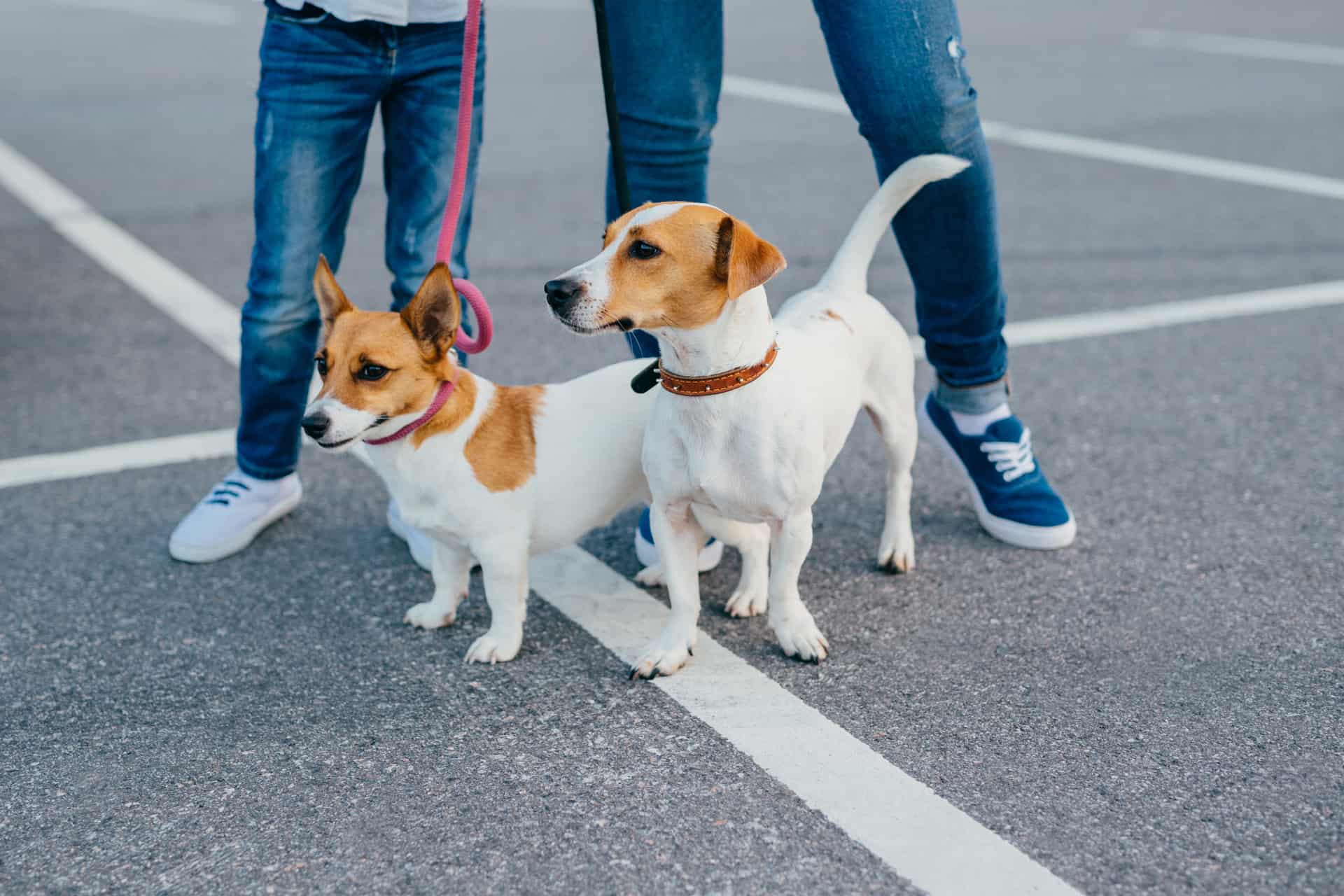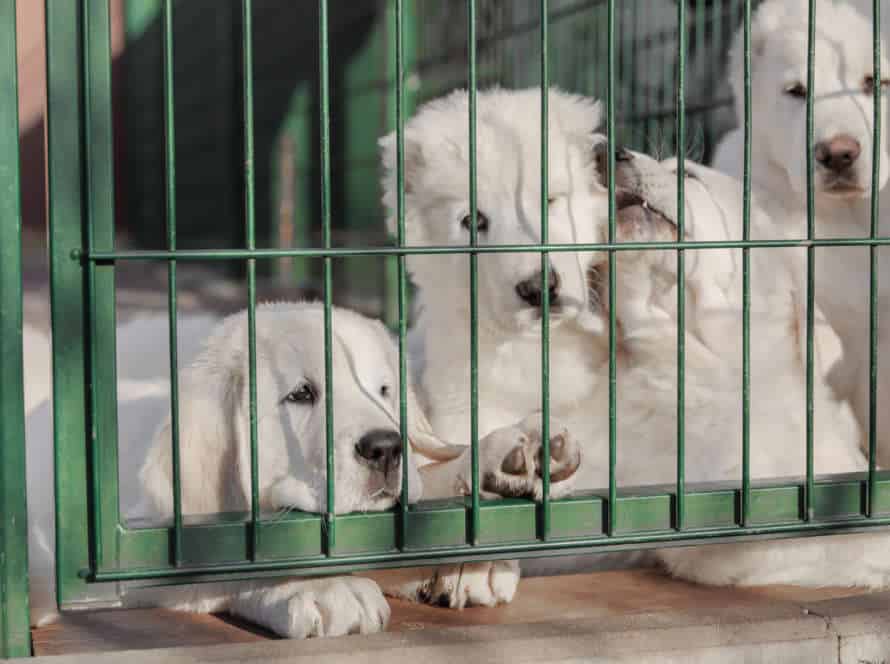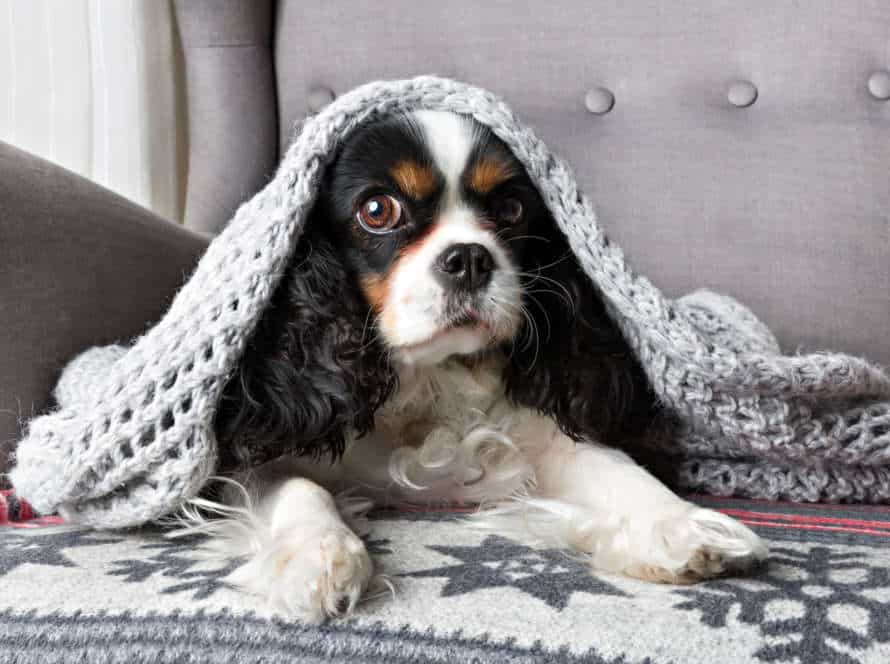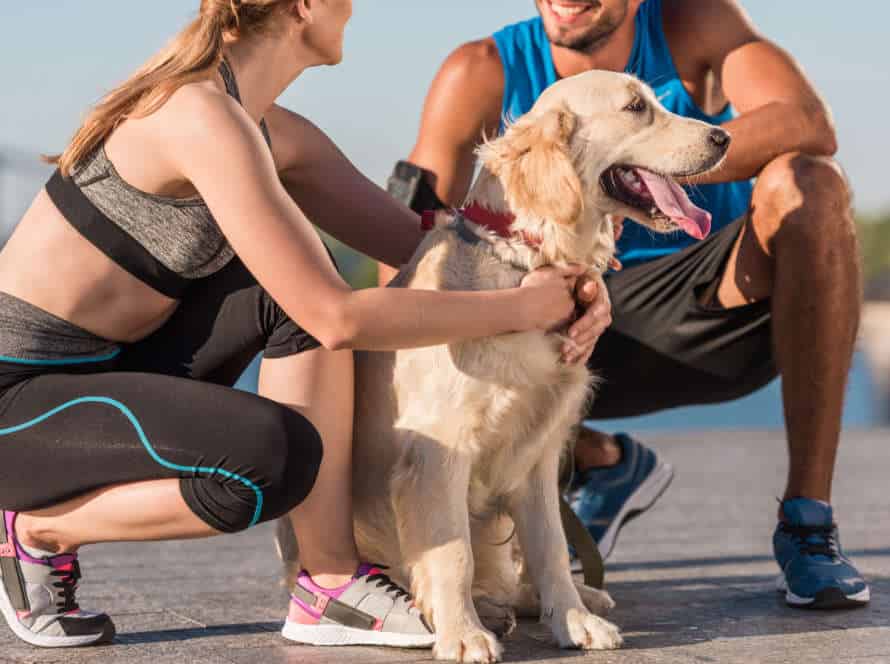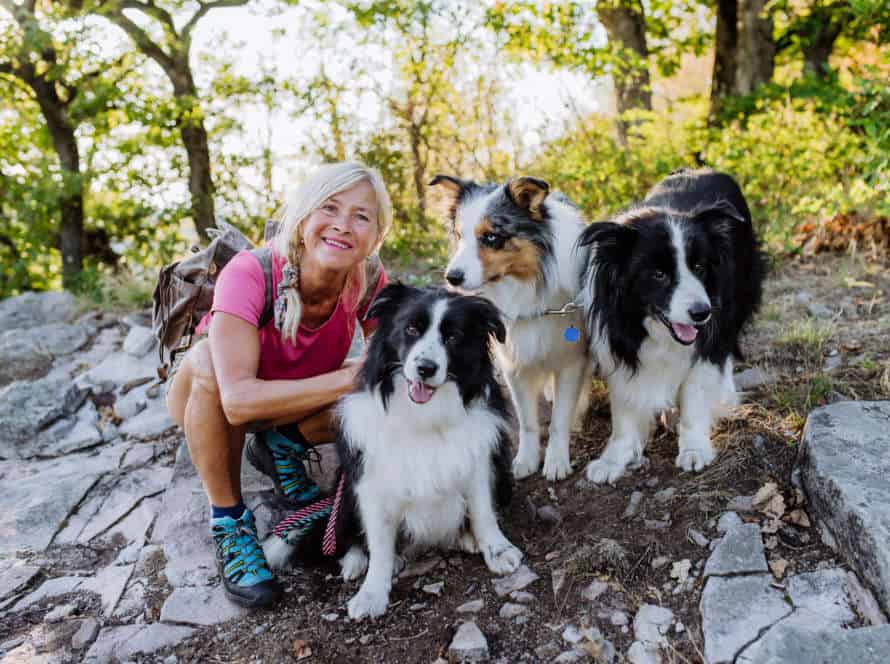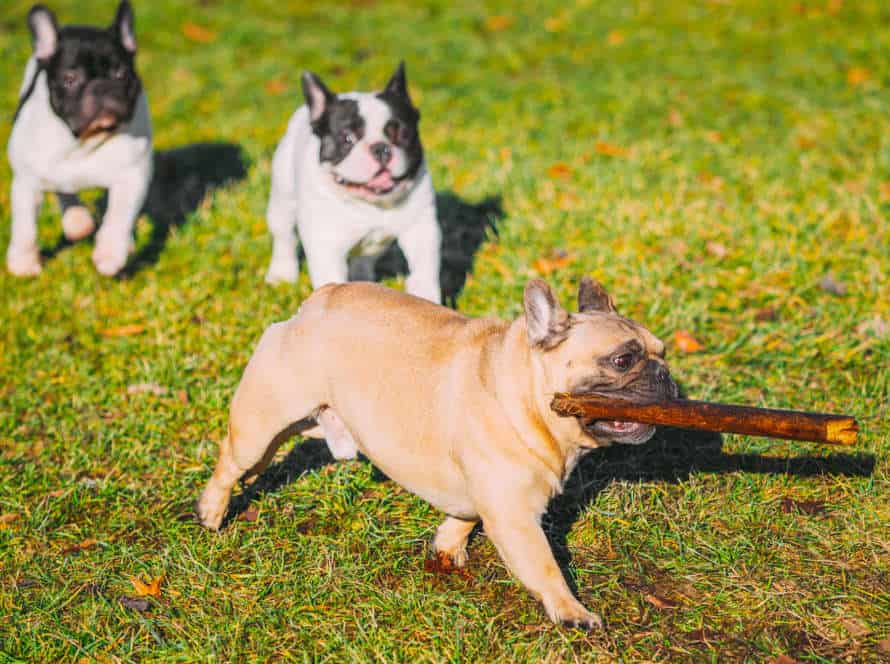Preparing Your Dog for Off-Leash Dog Parks
Getting your pup ready for off-leash dog parks requires multiple steps. Here are some tips for preparing your pup for the parks:
- Basic Training: Teach your dog the basics. Commands will help you control your pup in case of misbehavior.
- Socializing: Let your pup meet other dogs and people. This will help them have good social skills and be less anxious.
- Vaccinations and Health Checkup: Make sure your pup’s shots are up to date and they are healthy enough for the park.
- Leash Training: Your pup needs to be okay walking on a leash and following you.
These steps will make sure your pup is safe and enjoys the experience!
Dog Park Etiquette
Dog parks can be awesome for your pup! Off-leash play and meeting other dogs. But, before you go, set ground rules.
Dog park etiquette:
- Watch your pup
- Respect other dogs & their owners
- Clean up after your pup
- Follow the park’s rules
Now, let’s get ready for the dog park!
Know your dog
It’s important to understand your dog’s temperament and behavior before taking them to an off-leash park. Here’s what to keep in mind:
- Watch for body language and signals that indicate if your pup is comfortable or not.
- Train and socialize your dog for better behavior around other people and pets.
- Make sure vaccinations are up to date and your pup is healthy.
- Pick up after your pup and stop them from digging or damaging the park.
- Be respectful of other dogs, their owners, and the park rules.
Heed these pointers to make the dog park experience safe and enjoyable for everyone!
Consistently work on Basic Obedience
Consistently practising basic obedience is essential for visiting off-leash dog parks. It helps your dog to follow commands and behave properly with other dogs and people. Here are some basic obedience commands to teach your pooch:
- Sit: Command your dog to sit. Then have them stay in the position until released.
- Come: When called, use treats and praise to encourage your dog to come.
- Stay: Use verbal and physical cues to make your dog stay in one place until released.
- Leave it: Teach your dog to ignore distractions or potential dangers, like other dogs, food, and toxic substances.
- Walking on a leash: Train your pup to walk neatly on a leash. No pulling or lunging!
These basic obedience commands help your dog be a polite, well-behaved member of the off-leash dog park community. So, keep practising!
Research Rules and Regulations of the Dog Park
Researching rules & regulations is key before visiting a dog park. Vaccinations, good behaviour & leashing/unleashing dogs in designated areas are normally required. Additionally:
- Bring a bag to clean up after your pup & dispose of waste properly.
- Monitor your dog’s behaviour & avoid the park if they show aggression or fear.
- Don’t bring female dogs in heat, sick dogs, or puppies under 4 months old.
By following these rules, everyone has a positive & safe experience. Check with your local municipality for specific rules regarding dog parks.
Prepping Your Dog for Off-Leash Parks
Bringing your canine to off-leash parks? It’s a great way to bond, exercise and socialize with your pup. But, you gotta make sure your dog is ready for it. Taking the right steps can ensure your pup’s prepared and it’s a positive experience. Here’s what you can do to get your pup ready for off-leash parks:
Socializing Your Dog
Socializing your pup is critical to avoid aggressive acts and make them comfy with other doggos and humans. Prepping your pooch for off-leash parks is a great way to do this. Here are some tips:
- Teach basics: A trained pup is better suited to handle social scenarios. Teach ’em sit, come, stay and leave it.
- Increase exposure: Slowly expose your pup to different people, animals and situations to reduce fear and anxiety.
- Start small: Begin by socializing your pooch in smaller crews with dogs of similar temperaments.
- Supervise interactions: Watch all interactions between your pup and other doggos. Disrupt aggressive behavior and praise good behavior.
- Consider a training class: Sign your fur baby up for a training class to help them learn proper social behavior.
Prepping for off-leash parks requires patience and determination. Always reward good behavior and show your pup lots of love and affection.
Teaching Proper Recall
Training your pup in proper recall is a must for their safety and contentment in off-leash dog parks. Here are some ideas to support you in readying your pup for off-leash parks:
- Begin with basic obedience training to form great communication with your pup.
- Utilize positive reinforcement techniques, such as treats and praise, to promote excellent behavior, counting coming when called.
- Start by rehearsing in a tranquil, regulated atmosphere and step by step up the level of distraction and complexity.
- Make sure your pup is wearing a dependable collar or harness, plus a tag with your contact info.
- Consistently supervise your pup when they’re off-leash and be ready to step in if needed.
- Recall that every pup is diverse, and some may need more time and tolerance than others to master recall. With regularity and positive reinforcement, your pup can learn to enjoy off-leash parks in safety.
Desensitizing to Environmental Factors
Desensitizing your pup to the park atmosphere is key for off-leash play.
Introduce them to the setting from far away and gradually move closer.
Reward good behavior with treats, toys and verbal cues.
Expose them to other dogs, people and noises they may find in the park.
Do this until they’re comfortable and can enjoy the park without fear.
Preparing Yourself for the Dog Park
Preparation is key when visiting off-leash dog parks! Research the park you intend to visit. Know all the rules, protocols and etiquette. Bring the right supplies and dress appropriately. Not all dogs like the dog park atmosphere. Be aware of signs of stress in your own pet.
Let’s look into these topics deeper:
Staying Vigilant to Avoid Any Issue
Be vigilant and aware of your environment when getting ready for the dog park, to avoid any issues. Here are some tips to have a nice time:
- Observe the dogs before entering. Note any aggressive or overly excited behavior and don’t bring your dog if you see an issue.
- Know the park’s rules and regulations, including leash laws, and stick to them.
- Keep an eye on your dog all the time. Don’t let them out of your sight.
- Bring water, poop bags, and a first-aid kit.
- Stay calm if there is a confrontation between two or more dogs. Attempt to separate them without using force.
Follow these tips and you and your dog can enjoy the dog park safely and happily.
Bringing the Proper Equipment
To have a safe and enjoyable visit to the dog park, you must bring the right gear for yourself and your pup. Here is a list of items to consider:
For You:
- Comfy shoes and clothes
- Sunscreen and hat
- Water bottle, plus bowl
For Your Dog:
- Leash and collar/harness
- Waste bags to clean up
- Water and a portable bowl
- Toys for entertainment
- First-aid kit, just in case
Bringing the correct supplies will make for a much safer and enjoyable time at the park. Pro Tip: Always check park rules for any special needs, like vaccination records, that you may have to bring.
Watching and Reacting Appropriately to Difficult Situations
Prepare you and your pup for the dog park with these tips.
- Watch your pup’s body language and behavior. If they seem anxious or hostile, best to avoid the off-leash park.
- Also keep an eye on other dogs’ behavior. If they seem aggressive, calmly leave.
- In a tricky situation, react well. If two dogs scuffle, try to part them without escalating.
- Train your pup basic obedience commands like “come” and “stay”. This will stop them from running away or getting into trouble.
Awareness of the environment and your pup’s actions will guarantee a safe and fun trip to the off-leash dog park!
Enjoying the Dog Park
Heading to the pup park? It’s a fab way for you + your dog to have fun in the outdoors. Letting your furry friend off-leash can be amazing – if you do it right! Prep your pooch for this experience by following these steps. Enjoy the dog park with ease!
- Train your dog: Make sure your dog knows basic commands like ‘come’, ‘stay’, and ‘leave it’ before entering the off-leash area.
- Bring the essentials: Don’t forget to bring water, water dish, and poop bags for your furry friend.
- Monitor your dog: Keep an eye on your dog and be aware of their behavior towards other dogs at the park. Intervene if necessary.
- Respect other park-goers: Always follow the rules of the park and be respectful of others using the space.
- Leave if necessary: If your dog is feeling overwhelmed or agitated, it may be time to call it a day.
Being Aware of Your Surroundings
When it comes to having a great time at the dog park and getting your pup ready for off-leash areas, being aware of your surroundings is a must. Watch for dangers, distractions, and be mindful of others. Here’s what to keep in mind:
- Always watch your pup around unfamiliar dogs.
- Know the rules of the park.
- Don’t let your dog become aggressive or territorial.
- Look out for broken glass or any other hazards.
- Respect other dog owners and clean up after your pup.
By being conscious of your environment and preparing well for off-leash areas, you and your furry buddy can have an enjoyable and safe experience.
Encouraging Dogs to Take Breaks
It’s essential to give dogs a break when visiting a dog park. This prevents exhaustion and injuries from fatigue. Here are some tips:
- Bring water and a bowl to drink. Even if they don’t always drink, offer water regularly.
- Look for shaded areas to avoid overheating.
- Leash break every 20 minutes, to encourage rest and regrouping before play resumes.
- Observe pup’s behavior, watching out for signs of overstimulation or stress. Panting, lying down too much, trembling – these are all signs to keep them away from the park.
Remember: breaks will keep our pups healthy and happy! So keep an eye on pup’s behavior and give regular rest periods for ultimate enjoyment of the dog park.
Practicing Good Dog Park Etiquette.
When visiting a dog park, it’s important to practice good etiquette. Here are some helpful tips:
- Firstly, ensure your pup has had obedience training, and can answer to basic commands.
- Secondly, keep a leash close-by, and use it when entering and leaving the park.
- Thirdly, always pick up after your pup. Don’t forget to use designated receptacles!
- Fourthly, be prepared to intervene if your pup acts aggressive or overly boisterous. Supervise them at all times.
- Lastly, be courteous to other dog owners and their pets. Ask permission before approaching.
By following these guidelines, you can make the most of your time at the dog park and create an enjoyable experience for you and your pup!
Frequently Asked Questions
Q: What should I do to prepare my dog for off-leash dog parks?
A: Start by exercising your dog regularly and establishing obedience training. Make sure your dog is vaccinated and socialized with other dogs before visiting an off-leash park.
Q: How can I ensure my dog’s safety at an off-leash park?
A: Keep a close eye on your dog at all times and be prepared to intervene if necessary. Make sure your dog has proper identification, such as a collar with tags, in case they get lost.
Q: What toys should I bring to an off-leash park?
A: Bring toys that can be easily shared and not too hard or sharp, such as tennis balls or frisbees. Avoid toys that squeak or make loud noises that could startle other dogs.
Q: Can I bring treats to an off-leash park?
A: It’s best to avoid bringing treats to avoid potential conflicts with other dogs. However, if you do bring treats, keep them in a secure container and only give them to your own dog in a designated area.
Q: Should I bring water for my dog to an off-leash park?
A: Yes, it’s important to bring water for your dog to prevent dehydration. Use a clean bowl or container and avoid sharing with other dogs to prevent the spread of germs.
Q: What should I do if my dog gets into a fight at an off-leash park?
A: Stay calm and separate the dogs using a loud noise or distraction. If necessary, use a leash or other tool to separate the dogs. Seek medical attention if either dog is injured.

